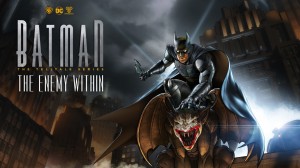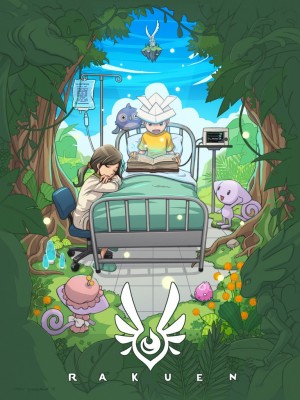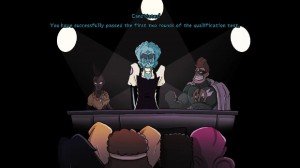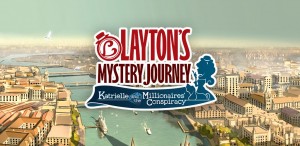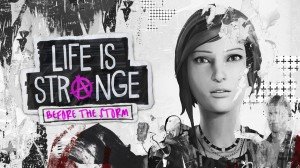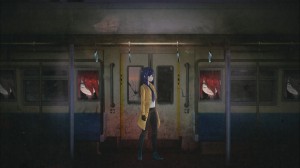Sam Dyer – The Art of Point-and-Click Adventure Games interview
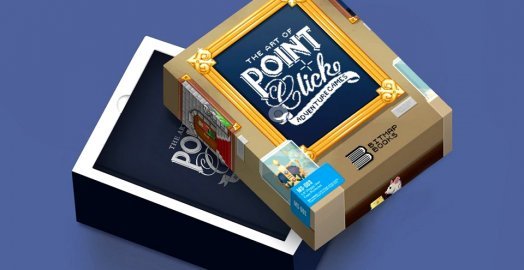
While graphics don't make or break a game, quality artwork with just the right design aesthetic can be invaluable to an adventure game, as we've seen countless memorable times over the years. So often, in fact, you could create a whole book about it.
Well, now someone has.
Sam Dyer has produced an extensive catalogue of the genre's rich visual history in The Art of Point-and-Click Adventure Games. The hardcover coffee table book contains a whopping 460 pages filled with decade-spanning in-game artwork and interviews with industry leaders like Tim Schafer, Jane Jensen, Robyn Miller, Dave Gibbons, Simon Woodruff, Al Lowe, Brian Moriarty and many more. There's even a Collector's Edition with delightful physical "feelies" just like in the genre's early days.
Adventure Gamers has teamed up with Bitmap Books to help promote this stunning collection, which is available now for pre-order – but only for a limited time! Pre-orders will be shipped sometime in August, but if you want to ensure your copy, better act fast!
As an added bonus, we are pleased to share our recent chat with the man behind the book himself, Sam Dyer.
Ivo Teel: Hi Sam, thanks for taking the time to do this interview with Adventure Gamers! For the people that don’t know you, can you briefly introduce yourself and explain what you do?
 |
Sam Dyer, pixel-style! |
Sam Dyer: My name is Sam Dyer, and I live in the beautiful English city of Bath with my wife and two children. My first computer was a Commodore 64, which I adored for years before ‘upgrading’ to the Commodore Amiga. It was on the Amiga that my love for point-and-click adventure games began with Lure of the Temptress, Monkey Island and later, Beneath a Steel Sky. I was lucky to grow up in a seaside town packed with arcades; I was surrounded by games and have loved them ever since. Professionally, I’ve been a graphic designer for 15 years and formed Bitmap Books in 2014. It’s the perfect hybrid of two of my biggest passions: design and retro gaming.
Ivo: You've launched several books in the past, including ones specifically about the Commodore 64, ZX Spectrum, NES/Famicom, SNES/Super Famicom and so on. What made you focus on a specific genre this time around, as opposed to a particular console or system?
Sam: A book focussing on point-and-click adventure games has been something I’ve wanted to do for a while. I was surprised that not many books existed on the genre and saw an opportunity to do something. Over the years I’ve built up a portfolio of books and a decent amount of contacts, so I felt like I was in a very good position to take on such a project. I also felt like I needed the experience gained from such a unique project and I’ve used all the things I've learned from previous books to make this one as good as it possibly can be.
Ivo: Could you walk us through the creation of a book like this? What does it entail?
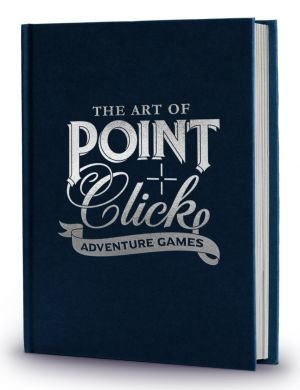 |
The hardcover book is 460 pages measuring 210mm x 260mm, with lithographic print, sewn binding, and bookmark ribbon
|
Sam: The first thing was to come up with a concept. What kind of book did I want it to be? What would the content and overall style be? Bitmap Books is very much all about the art side of things; our books are coffee table-style in their look and feel so I quickly decided that I should focus on the art side of point-and-click games – showcasing the wonderful sprite art, animation and background imagery. From that point, I started to build a page plan for the book that included decisions around which games to show, who to interview and any other potential features.
The games list started off with just a generic rundown of every single point-and-click title and it was whittled down from there. This was a fun period of playing games that I’d never even heard of, watching long plays on YouTube and reading reviews online. I couldn’t quite believe how many games there were to choose from, so I knew I had a tough job to get the list down to about 200 key titles. This is where I involved other people to canvass opinions and get objective views on ‘must have’ games. Once the list was pretty nailed down, I then started gathering imagery and researching which scene from each game would make a great spread.
Alongside the games, I always knew that I wanted the book to have plenty of written content which would come from a series of in-depth interviews. The process for this was to identity a list of potential interviewees and then make contact, which was done in various ways. I may have already made contact from a previous book or I’d use Facebook, Twitter and LinkedIn with great levels of success. I also used my network to see who knows who and can maybe do an introduction.
 |
A chat with Westwood co-creator Louis Castle is just one of many interviews included |
Once an interview was agreed upon, it was then a case of writing a set of questions and emailing them over. Some people prefer to use Skype instead of email, so in these instances we simply agreed on a time and recorded a Skype conversation. The audio was then transcribed. Once they were returned, the raw interviews were edited to a set pre-agreed word count. We decided early on to have two tiers of interviews – big interviews (4,000 words) and smaller ones (2,000 words). This way, if we didn’t get as much text as we would have liked, it didn’t matter and it could become a smaller interview. The system worked incredibly well and we ended up with around 40 interviews. The caliber of the interviews is staggering and we have some fascinating insights from familiar names such as Tim Schafer, Louis Castle, Jim Walls and Robyn Miller.
Also in tandem with the interviews was the generation of the game page captions. My role involved lots of juggling and organisation to ensure that all the content came together at the same time.
Once the content was done, it was really a graphic design job to pull the whole book together – bringing it to life with imagery and typesetting all the words. By its nature, the book is very text and image heavy so it was a big challenge to get everything to fit and not to look too cluttered. It was also at this stage that I ran draft page designs past a few people to get more objective opinions such as ‘Does this image choice do the game justice’ and so on. Suggestions came out of this phase and design tweaks were made. All the while, the book was changing and evolving little by little.
When the content was all designed, the book went to a sub-editor and then a proofreader to mark-up any typos and grammar suggestions. These amendments were then made in the design and I was left with a pretty finished version of the book. From there, it was just last minute final tweaks from the interviewees and then sending to print.

In choosing art for the book, this classic scene from Monkey Island 2 was a natural fit.
Ivo: How were you able to get all the resources and art into the book? How did you decide what to add into it?
Sam: This was really tricky and probably took the most time. Very early on I came across the excellent Adventure Game Backgrounds run by Patrik Spacek. His site is full of background imagery from many adventure games and he agreed to allow us to feature them in the book. We also approached other archival sites such as Sierra Wallpaper and Adventure Rooms, who also kindly allowed us to use their in-game imagery. This was a great base from which to start when it came to gathering screenshots. The majority of the imagery came from simply playing games and taking endless amounts of screenshots and going through them and deciding which ones to go with. We even ripped graphic files from some games; whatever it took to get the best images from the required parts of the games!
As far as deciding what goes in, it’s just kind of a mixture between a 'designer's eye' (what would look good on a page) and what sums that game up. There’s some trial and error, but normally you know instantly when you’ve nailed the perfect image. An example of this is Monkey Island 2. The opening spread for the game features Largo hanging Guybrush over the Woodtick bridge – a classic scene that everyone remembers. Visually, it’s a great composition and just ‘works’ really well on a spread.
Ivo: Who are some of your favourite adventure game artists? Did you immediately know which games needed to be included?
Sam: I knew the games I wanted to be included but they are probably the more obvious choices such as Simon the Sorcerer, Beneath a Steel Sky and Day of the Tentacle. I also knew that certain games had to feature – ones that consistently pop up as shining examples of the genre. These games I knew would be included as they are ‘classics’ and ones that people remember fondly. I’d say my favourite artist is Mark Ferrari. What he did with Loom and The Secret of Monkey Island with the primitive EGA graphics mode is pure genius.
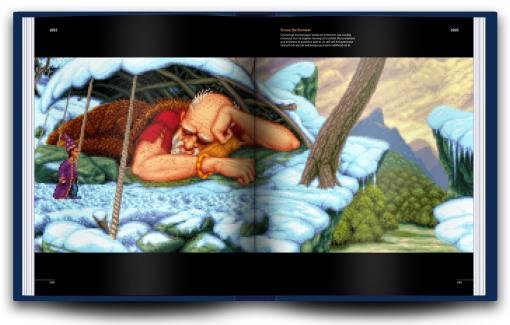
Simon the Sorcerer was another obvious choice for a book about striking adventure game art
Ivo: Since you spoke with so many different game designers and artists in the creation of The Art of Point-and-Click Adventure Games, which interview stood out most?
Sam: I really enjoyed our interview with Robyn Miller, as he went into great detail about the Cyan days and creating games such as Myst and Riven. These weren’t games that I played when released, so it was fascinating to read about their creation directly from the main artist and creator.
The following excerpt is from Robyn’s interview:
“We began with the idea that Myst should maintain a believable and compelling narrative and characters. The player needed to feel this world was real and empathise with the characters. Honestly, we had no idea to what degree we could accomplish our dreams for the project, but we felt that we’d have the greatest chance of achieving this stuff if we kept things simple. That meant a simple mystery with the player as the protagonist. One brother was bad, one was good; the player would have to decide between them. Achenar seemed more overtly mad, but we were going to plant clues that Sirrus, the more spoiled and intelligent of the two, had manipulated Achenar to his own sociopathic ends.
We designed the islands and gameplay around this concept over an initial two-month period. Rand and I sat in a room, discussing and sketching. During this, we came up with the idea of linking books and the missing pages. We designed all the puzzles and filled in all the gaps in the story. We did a lot in a short amount of time. There wasn’t a lot of second-guessing because we didn’t have time for that. It was late in our design that we realised the mystery wasn’t entirely working. Players couldn’t or wouldn’t root for Achenar or Sirrus. We needed the twist at the end of the story: the father character – the true and only protagonist. As we tested, we saw that people enjoyed the game, but they weren’t immediately engaging with the narrative. We went back to the drawing board and added elements to help incite the player to action: a note on the path; a recording of Atrus in the ‘fore-chamber’. These things helped immensely.”
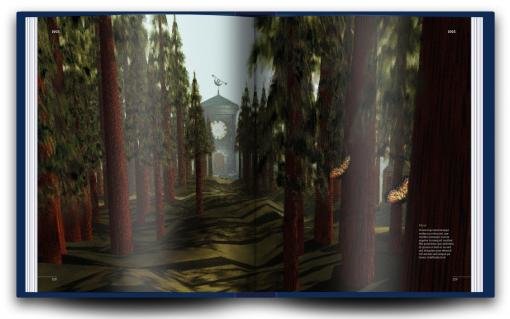
No book about adventure game art would be complete with Myst, along with an interview with Cyan co-creator Robyn Miller
Ivo: Was there anything that surprised you during interviews?
Sam: I wouldn’t say anything revealed particularly surprised me, but there are some great anecdotes about the early days at Sierra from Jim Walls and Al Lowe, while David Fox and Noah Falstein give some fascinating insights into life at Lucasfilm and described what Skywalker Ranch was like to work at. Overall, I was very surprised by how open and passionate everyone still is about talking about these games. The volume of content and people willing to do an interview was pretty mind-blowing, and it’s a testament to how well loved the genre still is.
Ivo: We all talk about the big classics from LucasArts or Sierra, but in your book I'm particularly looking forward to exploring some of the lesser-known adventure games you've mentioned – even some homebrew games! Can you lift the veil on any of these titles?
Sam: I was determined from the start to look beyond the obvious LucasArts and Sierra titles. Don’t get me wrong, games such as Monkey Island and King’s Quest are covered because of their brilliance and historical importance, but I wanted to dig deeper. This has meant covering titles such as The Legend of Kyrandia, Heart of China, Touché, Blade Runner, Toonstruck and Gobliiins, just to give a handful of examples. We also wanted to recognise the current point-and-click scene and have interviews and features about recent titles such as The Darkside Detective, Fran Bow, Machinarium, Dropsy, Paradigm and The Lion’s Song. The games we decided to include were determined by research – looking though reviews, digital sales charts and finding out which titles would suit the book. As the book is all about the art, the main criteria has always been ‘does it look beautiful?’ so a game such as The Lion’s Song, with its stylised sepia-tone graphics, was an instant shoe-in.

Beyond the more historical classics, Dyer included many newer indie titles as well, including Fran Bow
Ivo: What are you most proud of about the book, and what element was hardest to nail down?
Sam: I’d probably say the Jim Walls interview was the hardest to get and I owe Robert Lindsley a big thanks for this. Al Lowe was already contributing stories about Sierra but I really wanted someone else to bolster the content about the company. Robert helped me reach out to Jim and I’m incredibly proud of that interview. You don’t often see him interviewed so it feels like a special one. I’d say that overall, I’m most proud of the quality of the content as I feel like the bar was seriously raised for this book. I think that it appropriately pays homage to this wonderful genre and does it justice, something that was my aim at the beginning. That’s incredibly satisfying. I also need to give a massive shout out to Mike Bevan and Damien McFerran, as those guys took care of so much of the interview and editorial content and did an amazing job.
Ivo: The collector's edition includes great touches, and the box looks gorgeous too. Could you tell us a bit more about the two different editions?
 |
The Dial-an-Interview code wheel is just one of several fun feelies in the collector's edition
|
Sam: Both editions of the book are hardback and come shrink-wrapped. The standard edition is ‘just the book’ and the collector’s edition is the same book, but housed within a DOS-Style game box with some cool extras. The collector’s edition is limited to the pre-order period so after July, this will never be available again. The cover of the collector’s edition box is created by Paul Conway (Spooky Doorway, The Darkside Detective). We wanted to create an art gallery scene with paintings and exhibits that related to classic point-and-click titles, such as a three headed monkey sculpture and grail within a glass cabinet. It’s a bit of fun and looks great wrapped around the box. Within the box also comes a series of ‘feelies’, such as a Dial-an-Interview code wheel, which is a play on the classic 'Dial-A-Pirate' code wheel and acts as a fun little page number finder for interviews. There's also a USB drive in the shape of a floppy disk that contains a PDF of the book and some other goodies, an acrylic grog drink coaster, and finally a magnetic word game which consists of a series of individual magnetic words such as ‘Open’, ’Give’, ‘Speak’ and ‘Wizard’ – these can be arranged to create some fun dialog arrangements.
Ivo: Any future plans for other books?
Sam: I’d like to do more books around the subject of adventure games, as it’s a subject I’m very passionate about. We are actually going to be publishing a printed version of the CRPG Book by Felipe Pepe later this year, which is going to be great. Beyond that, our next visual compendium will be focussing on the SEGA Master System and officially licensed by SEGA.
Ivo: Thanks a lot for taking the time. We look forward to the launch of the The Art of Point-and-Click Adventure Games in August.
That's it for our interview with Sam, but what's with all these words for a book about art, you ask?! You're absolutely right, so flip the page for a bigger sampling of page layouts.
Though far from comprehensive, here are more of the art spreads on display in The Art of Point-and-Click Adventure Games.
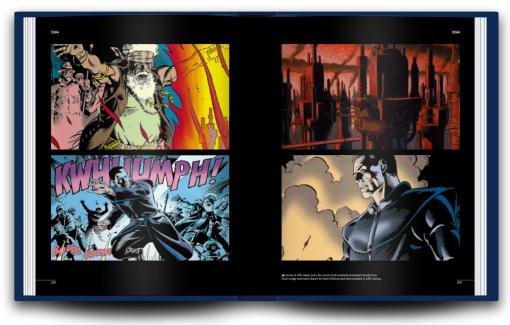
Beneath a Steel Sky
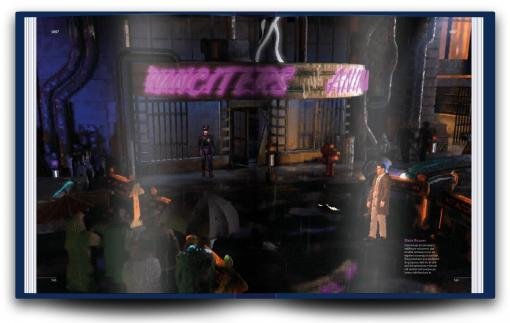
Blade Runner
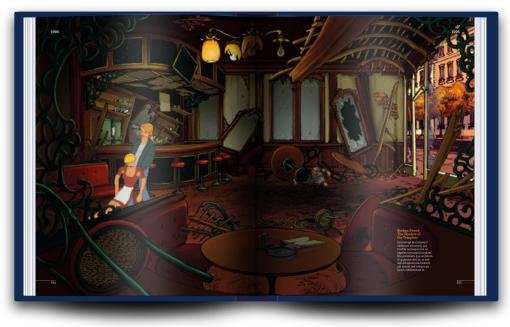
Broken Sword: The Shadow of the Templars
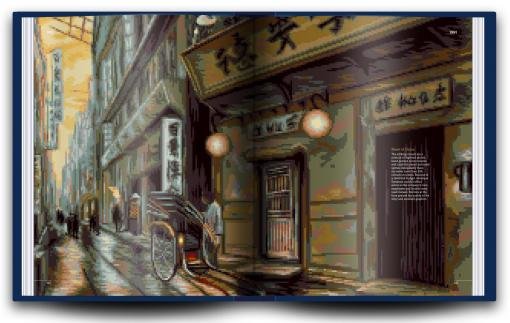
Heart of China

The Darkside Detective
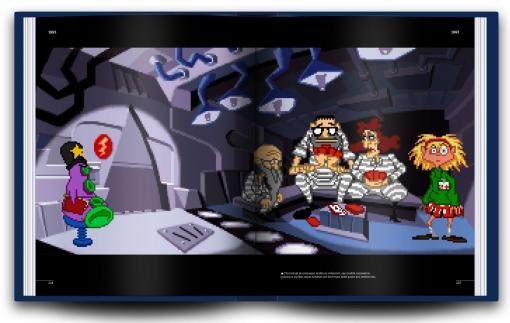
Day of the Tentacle

Indiana Jones and the Last Crusade
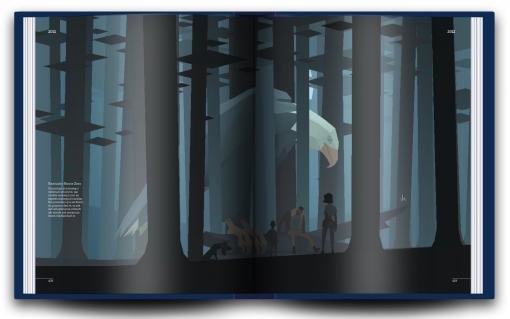
Kentucky Route Zero
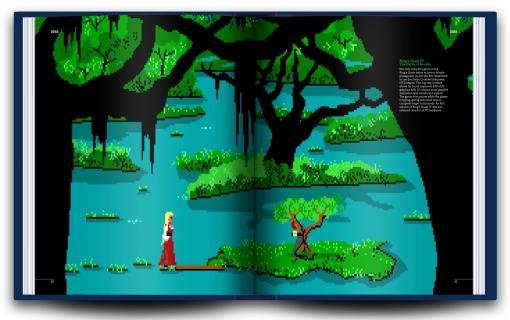
King's Quest IV: The Perils of Rosella

Machinarium

Sam & Max Hit the Road
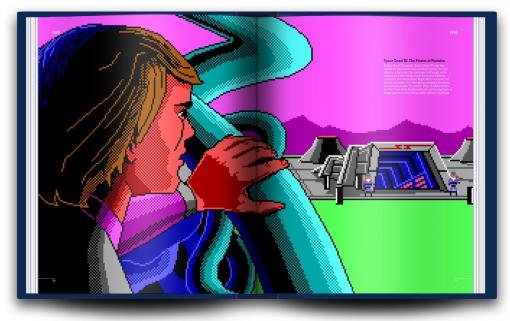
Space Quest III: The Pirates of Pestulon

Toonstruck



